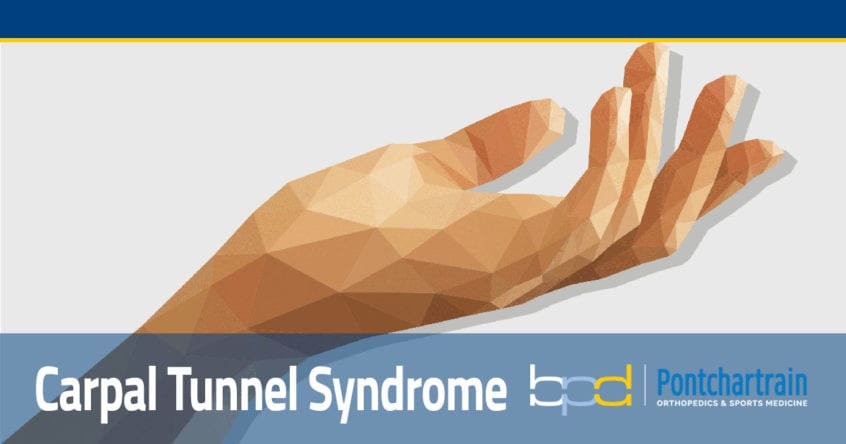What is Carpal Tunnel Syndrome?
Carpal tunnel syndrome is basically a pinched nerve in the wrist. The median nerve and nine tendons travel from the forearm to the wrist. The nerve passes under the transverse carpal ligament at the wrist to give sensation to the thumb, index, middle, and inner portion of the ring fingers. When pressure builds up in the space between the nerve and the ligament, a condition known as carpal tunnel syndrome (CTS) develops. Patients with CTS typically experience tingling and numbness in the hand, and often times pain, particularly at night.
What Causes Carpal Tunnel Syndrome?
Pressure on the nerve can be from several different factors, and often times involve a combination of the following:
- Swelling of the lining of the tendons – tenosynovitis
- Acute injures (fractures/dislocations)
- Arthritis
- Fluid Retention during pregnancy
- Health conditions – diabetes, rheumatoid, thyroid gland imbalance
- Heredity – anatomically smaller carpal tunnel
How is CTS Diagnosed?
CTS is diagnosed using the following:
- A thorough examination of the arm
- A detailed history, that includes your symptoms, medical conditions, activities and prior injuries
X-rays may also be taken to check for arthritis or a fracture. In some cases, electro diagnostic studies (nerve conduction tests) are performed to confirm the diagnosis. A diagnostic steroid injection into the carpal tunnel can be used, as another confirmatory test, which also may help relieve the symptoms.
How is CTS Treated?
As is the case with most orthopedic injuries/conditions, conservative, non-surgical options are tried first. Initial treatments include the following:
- Activity modification. Decreasing or stopping activities that require excessive wrist movement may decrease symptoms.
- By holding the wrist straight, a brace is able to decrease the pressure on the nerve from flexion or extension of the wrist.
- Nonsteroidal anti-Inflammatory drugs (NSAIDS). Over the counter, or prescription medications such as ibuprofen or naproxen can relieve pain and inflammation.
- Corticosteroid injections. A combination of anesthetic and anti-inflammatory medications can be administered via injection into the area where the nerve is pinched. Although these often relieve symptoms, or calm a flare up, their effect is sometimes just temporary.
Surgical Treatment
If the symptoms of carpal tunnel are not relieved by these treatment options, surgical intervention might be necessary. During a 10-15-minute outpatient procedure, pressure on the nerve is decreased by cutting the ligament that forms the top of the tunnel. There are two standard techniques for this, open and endoscopic. A discussion with your physician will determine which may be best for you.
After surgery, many patients experience quick symptom relief, however in severe cases the numbness and tingling may takes several months to resolve. The soreness around the cut may last for several weeks and even a few months, but most people are able to return to their normal activity within a month of surgery.

